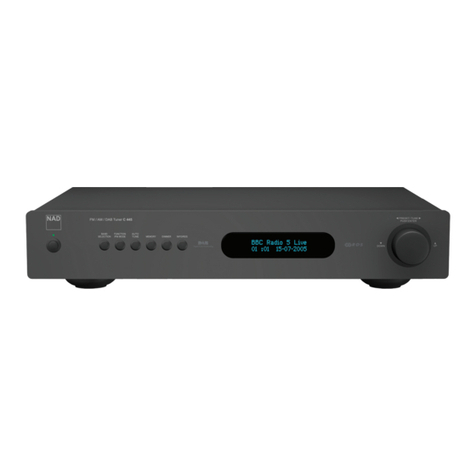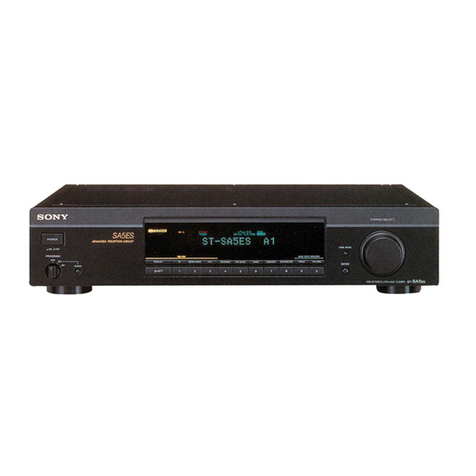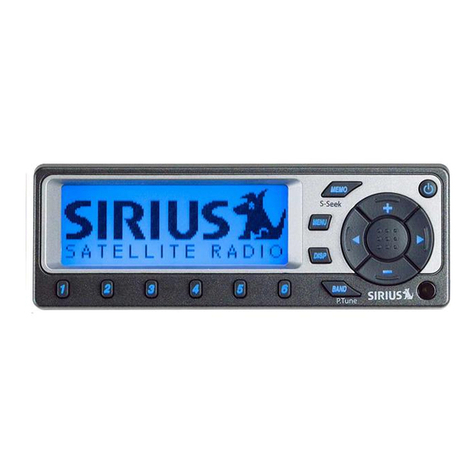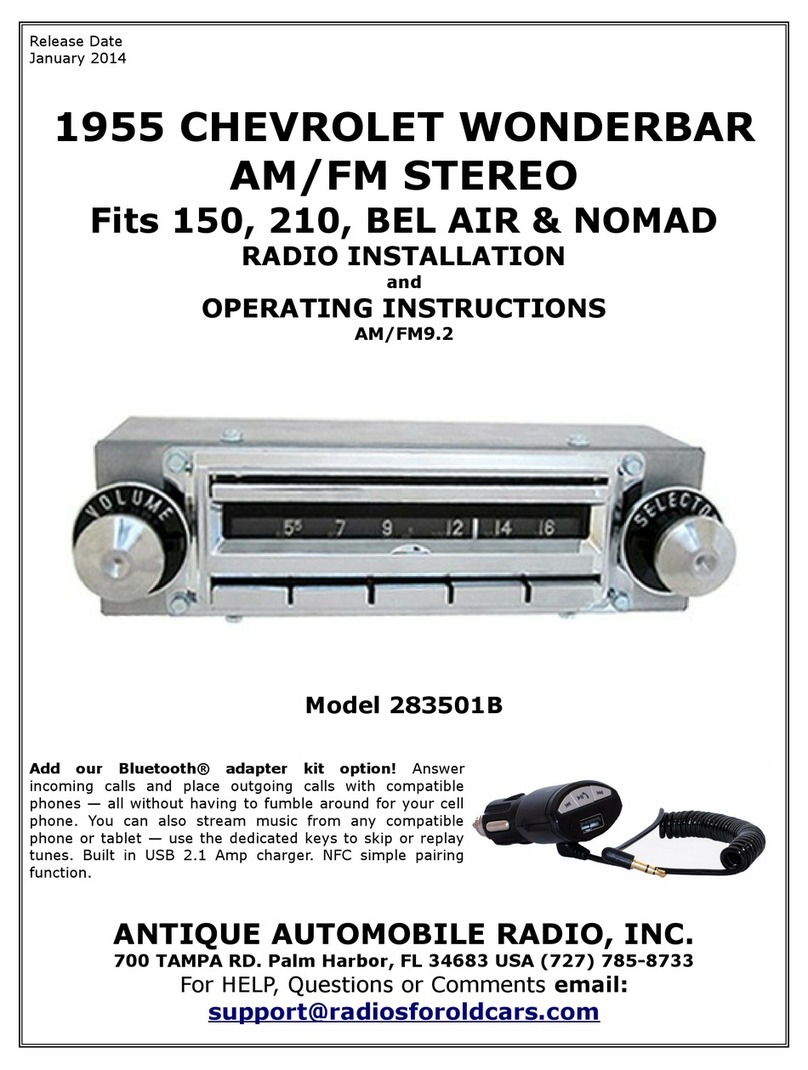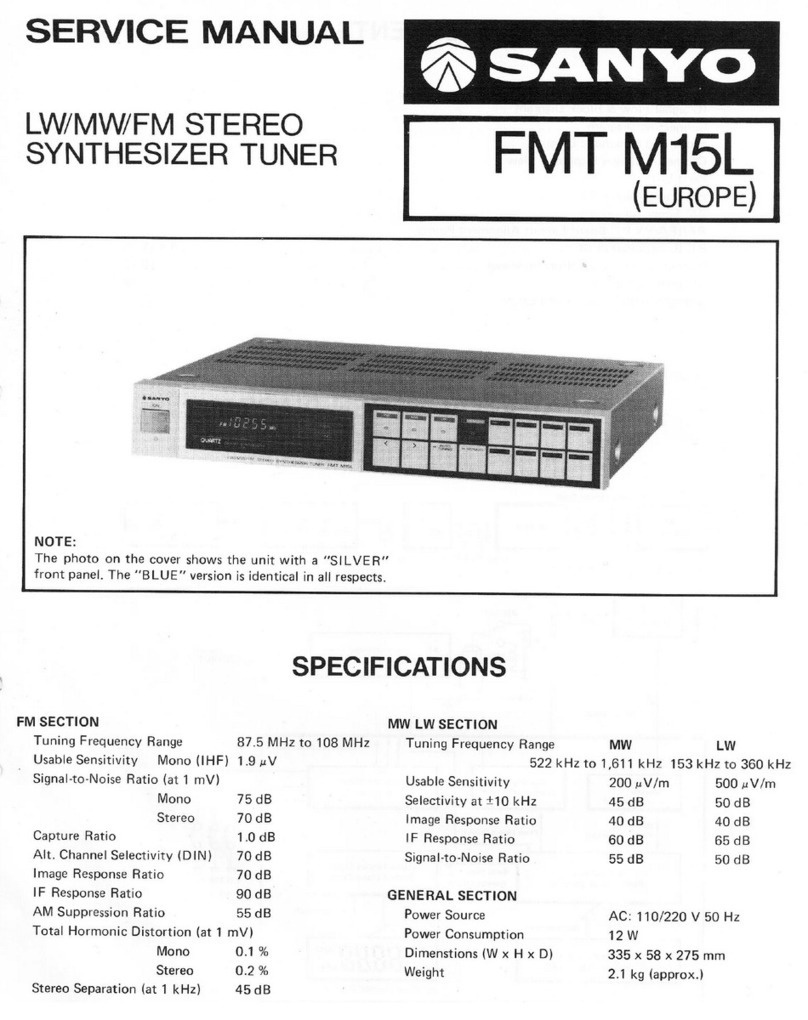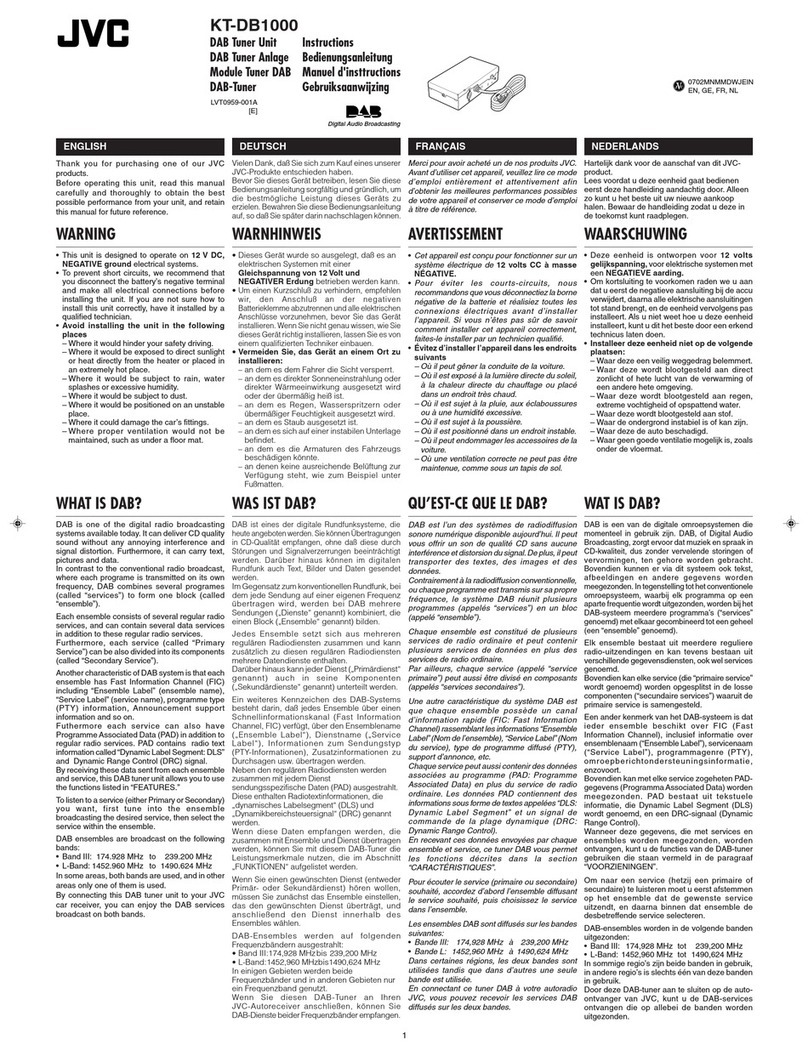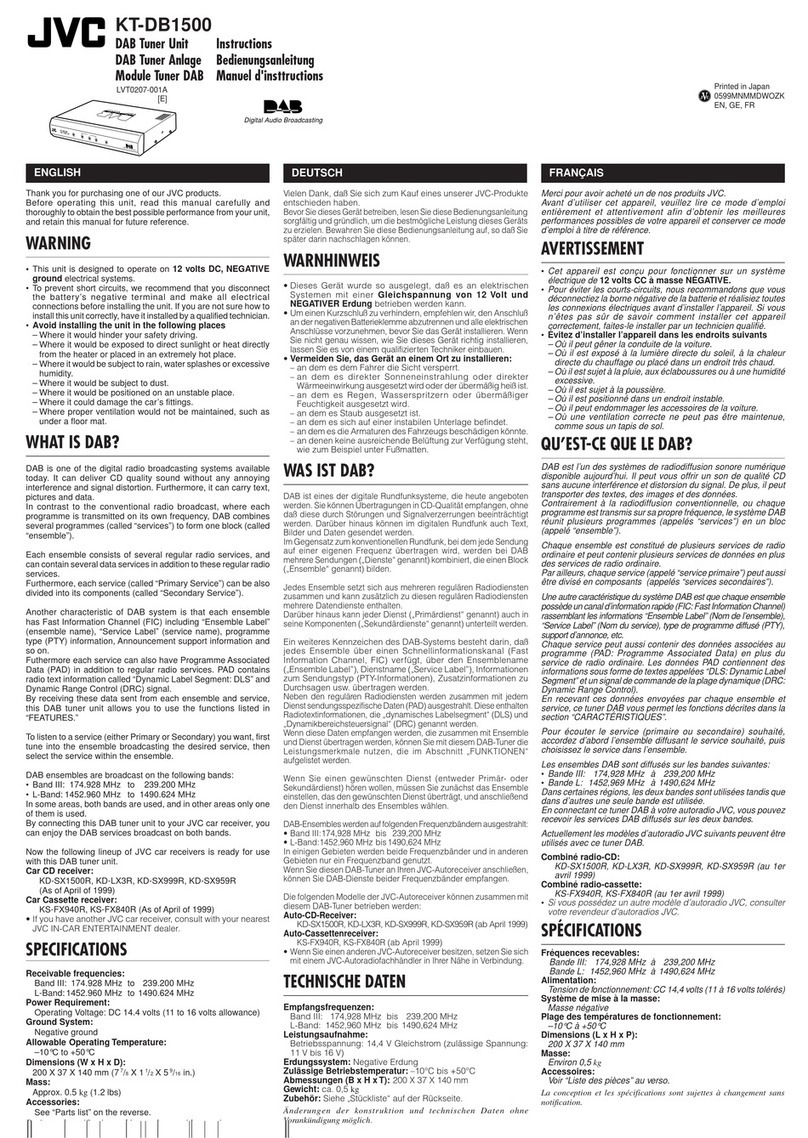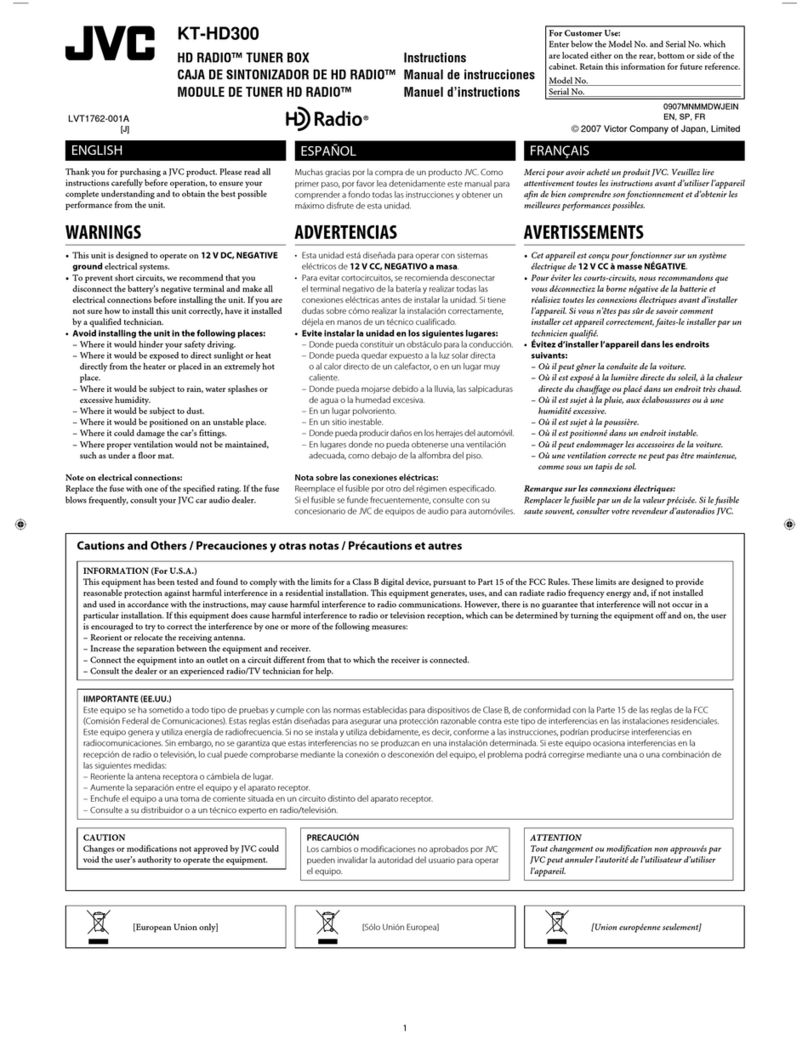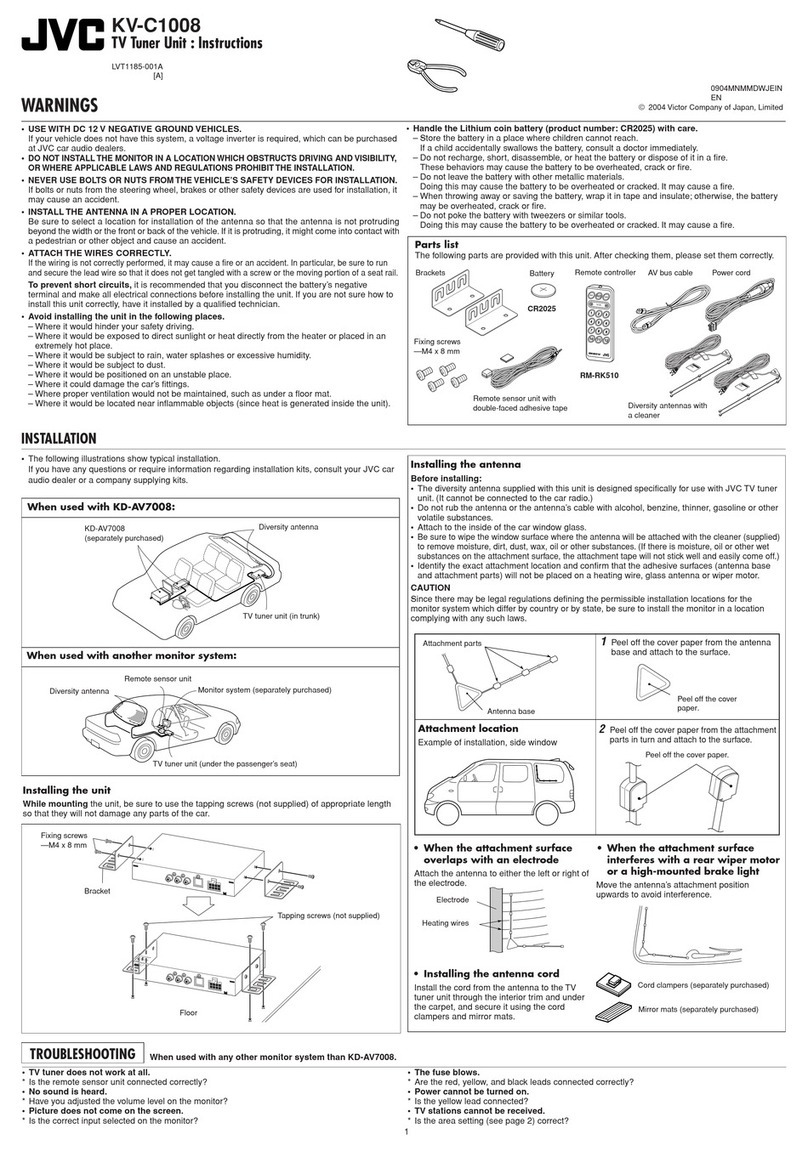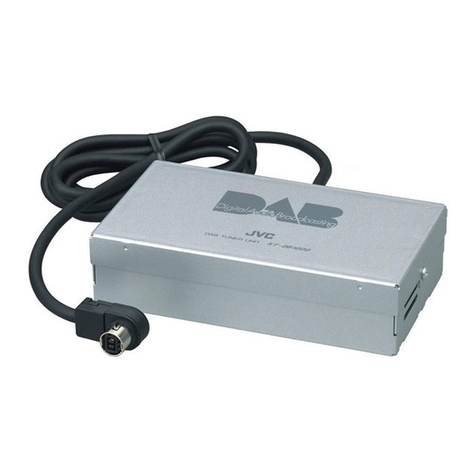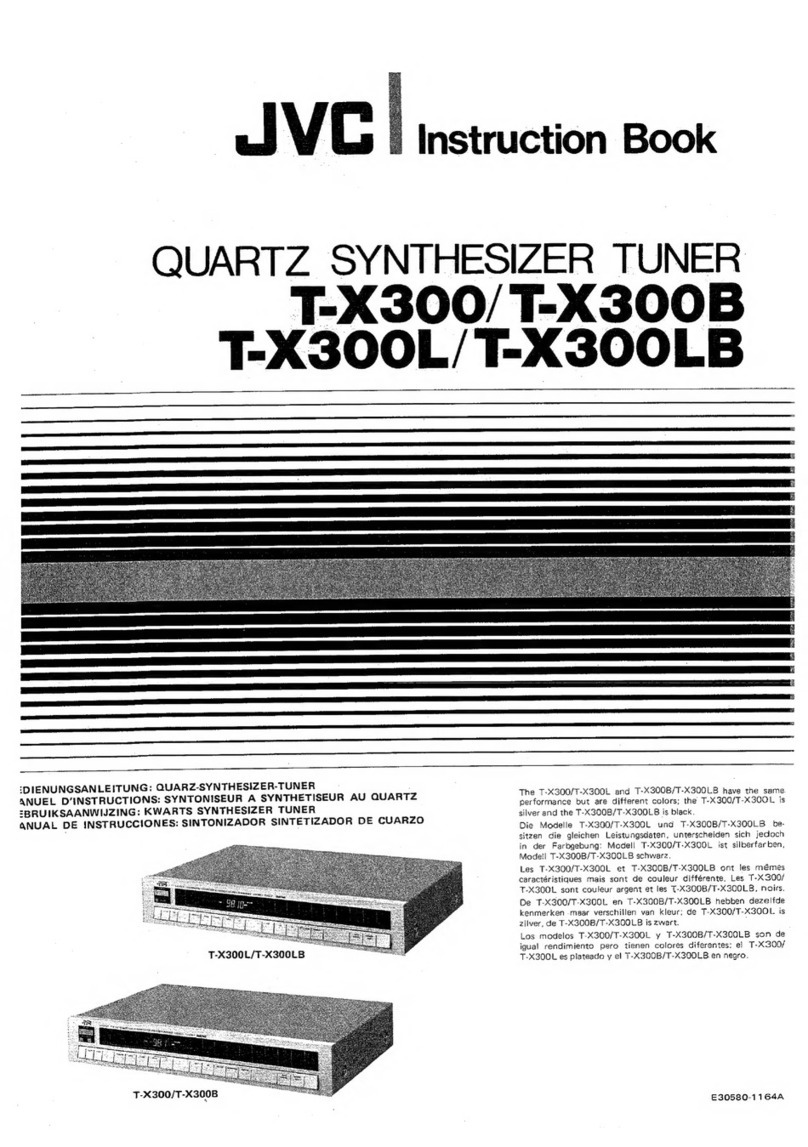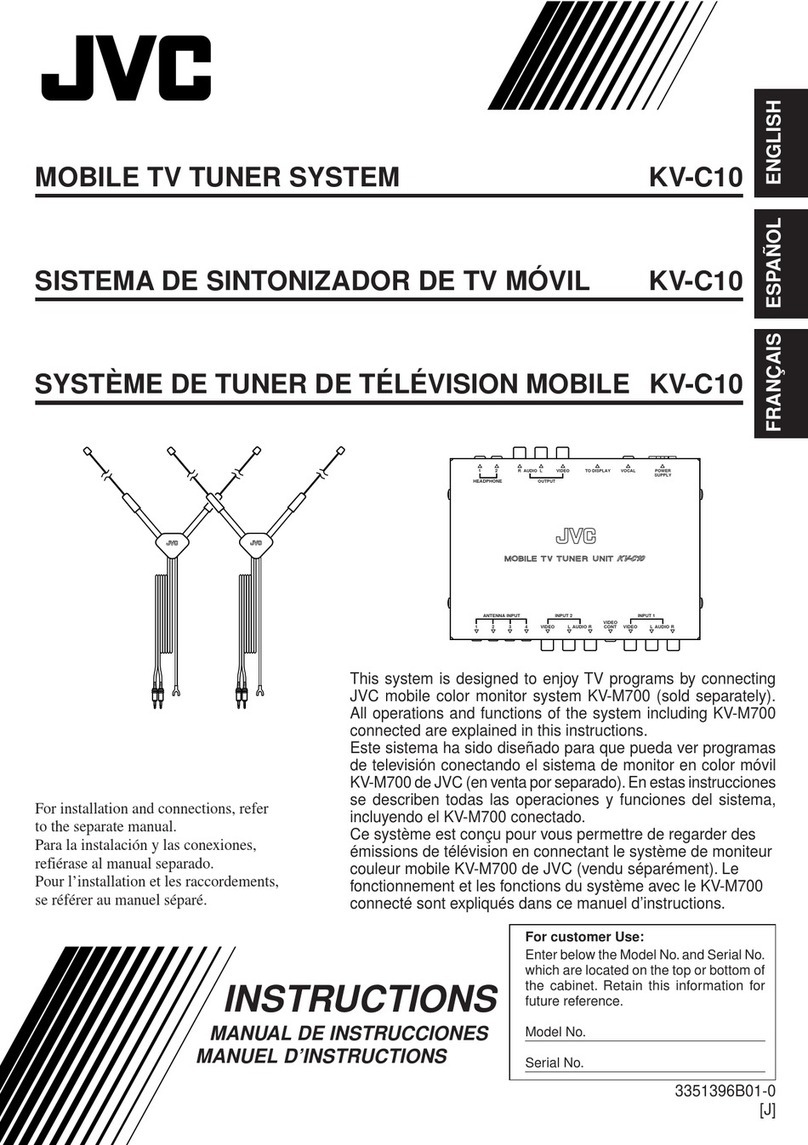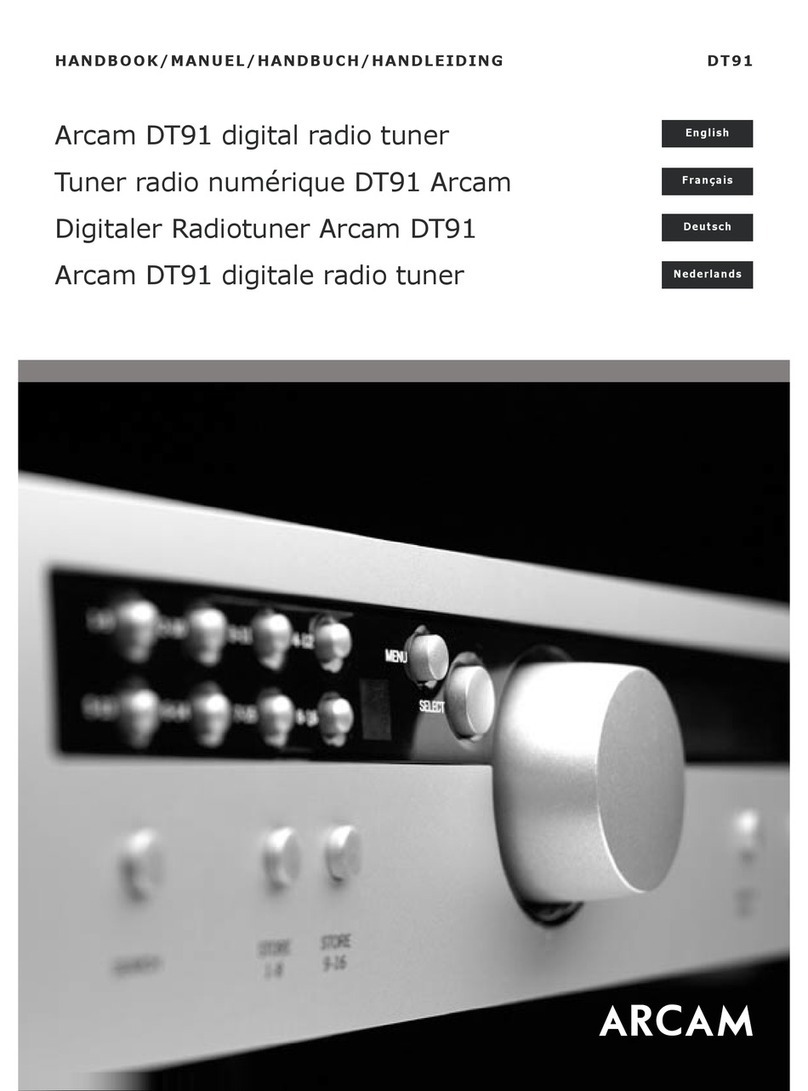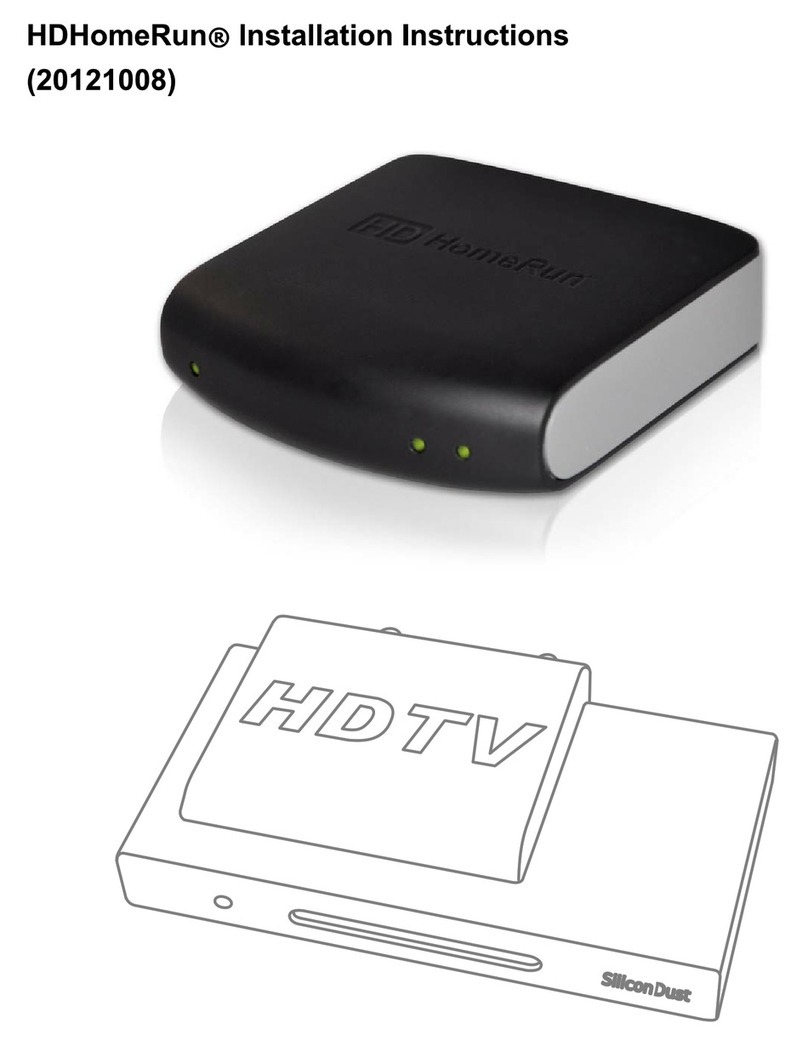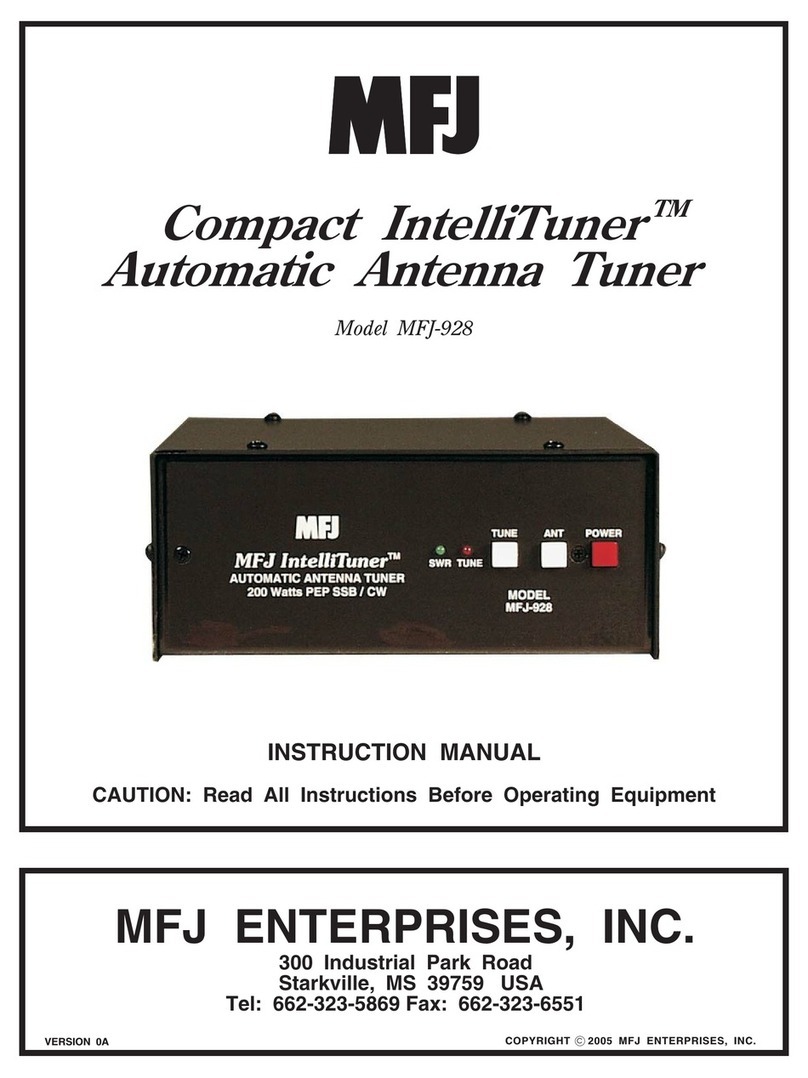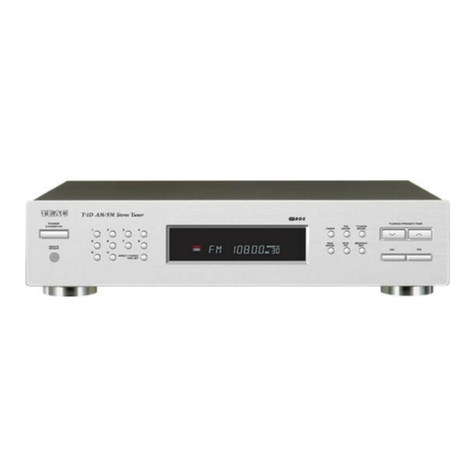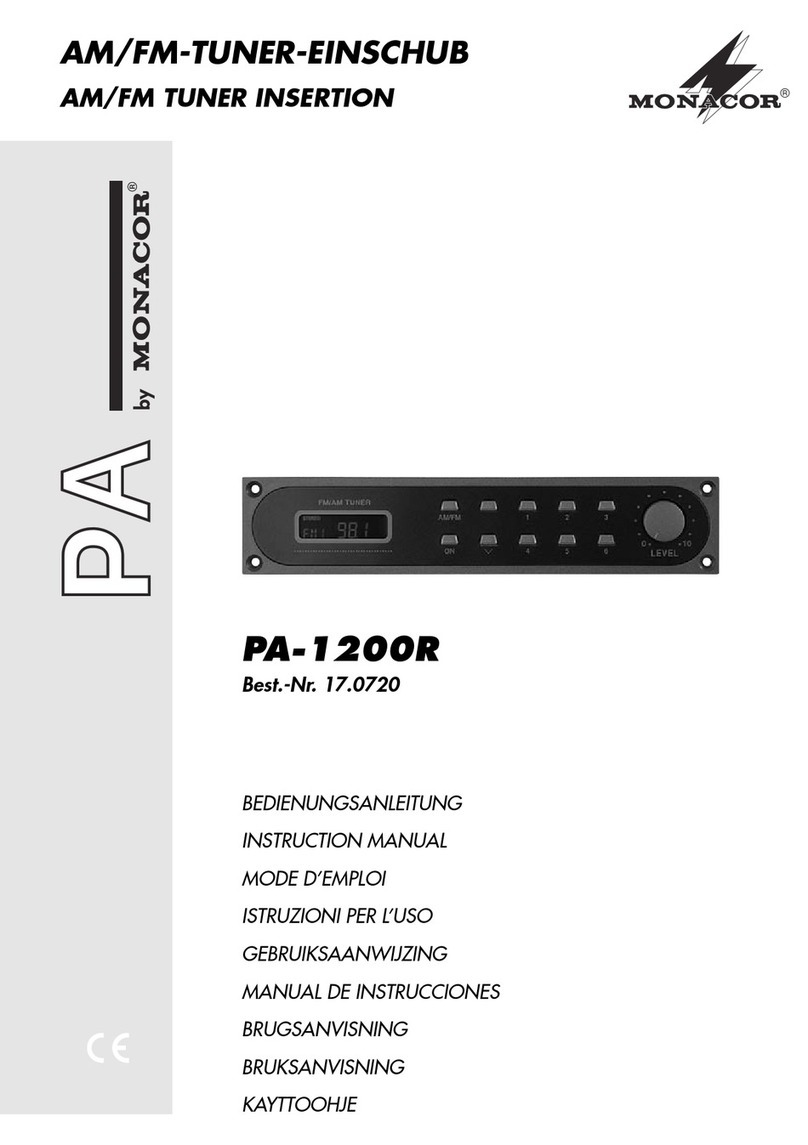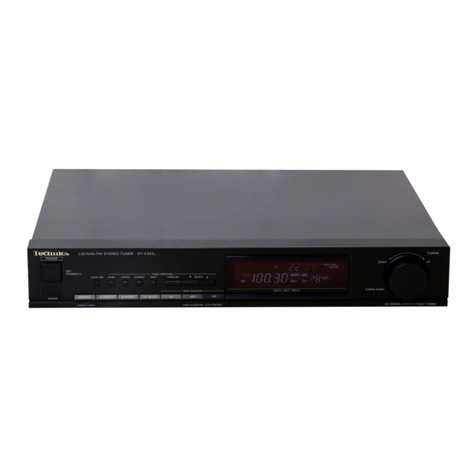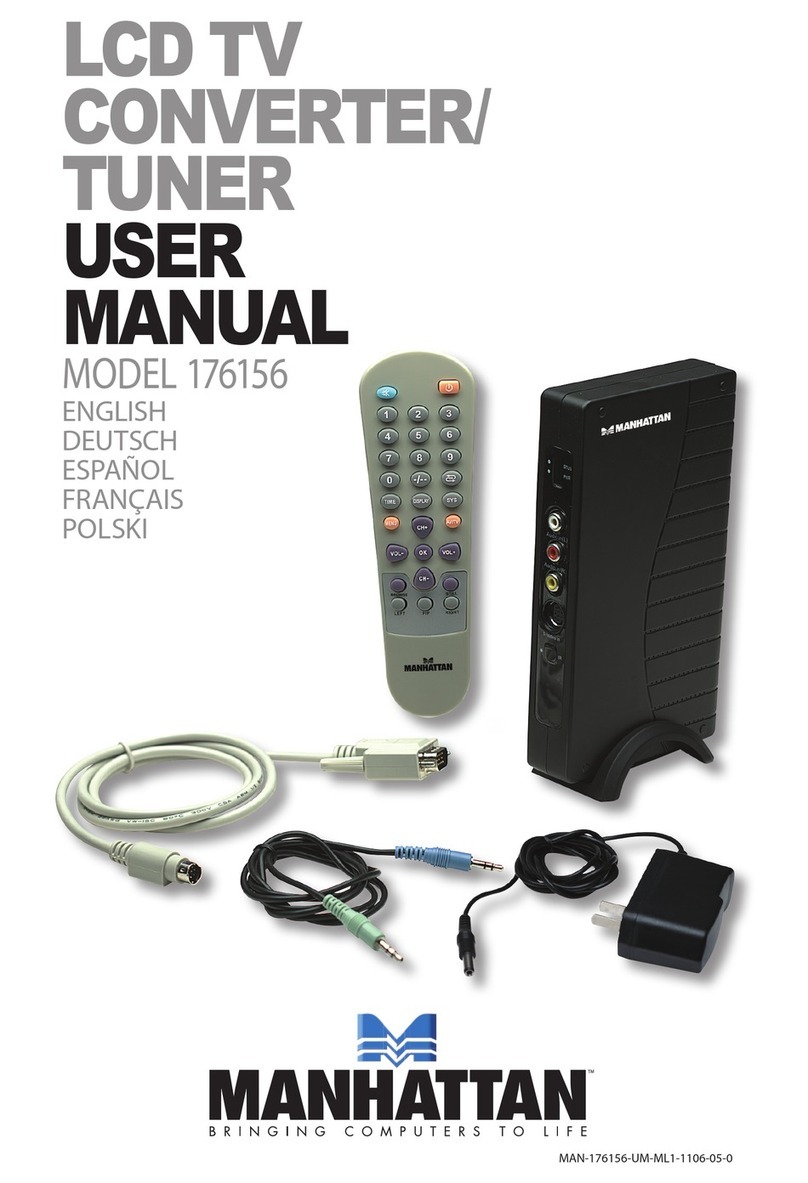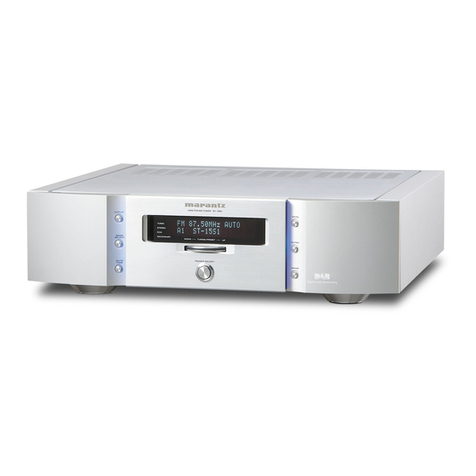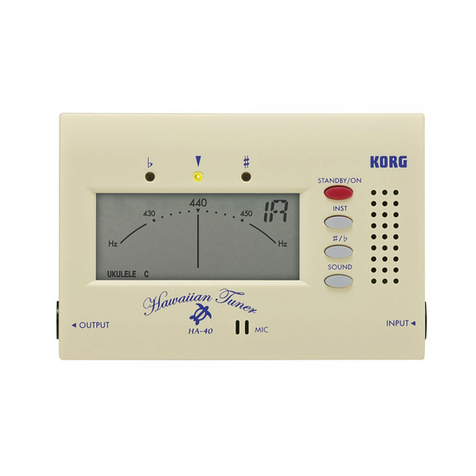5. Features
• Quartz PLL Frequency Synthesizer for maintaining high accuracy of reception in frequencies of 100 kHzspacings.
・AII electronic controlled manual tuning in addition to a7・station preset tuning convenience.
• Phase Locked Loop (PLL) discriminator for high performance and elimination of interference,unaffected by
vanatlons In envlronment or In aglng.
• Surface Acoustic Wave (SAW) filter to insure ideal transferring characteristics andsuperb selectivity for hi‑fi reception.
• Automatic Pilot Signal Canceller circuit and negative feed backed decorder employed in the MPXdemodulator IC
for obtaining extremely low distortion during FMstereo reception.
・2Dual Gate MOSFETs and 2double tuned circuits employed to gain ahigh performance in receiving various levels
of input signals.
• Anti‑birdy filter with defeat switch employed to eliminate noise interference during FMstereo reception.
・7‑segment indicator shows both the receiving frequency and the preset number,and 5LED indicators for showing
input signal level to the antenna terminal
• RECLEVELcalibrator is aconvenience for adjusting to ahighly accurate recording level.
・Coaxial antenna connector for hookup to an FMaerial with correct impedance.
6. Explanation of NewTechnology
6・(1) Synthesizer Circuit
The word "synthesizer" has become shomewhat popu‑
larized with the increase of what is knownas "electronic
music" produced by a"music synthesizer". Likewise,
the term "frequency synthesized tuner" is becoming
more and more popular with the increasing number of
such tuners which have appeard onthe market.
As the term "frequency synthesized" suggests,those
tuners incorporate afrequency synthesizer circuit,which
can beconstructed in various ways. TheT
・3030 frequen‑
cy sγnthesized FMtuner employs aPLL (Phase‑Locked
Loop) synthesizer in which aclosed loop containing a
reference crystal oscillator is constructed,thereby provid‑
ing ahighly stable and accurate reception.
Fig. 1shows ablock diagram of the frequency sunthe‑
sizer circuit employed in the T‑3030.
Station Select
Input Data
1/R
1/P
Pre‑Scaler
Fig.1
To
‑4‑
The VCO (voltage controlled oscillatorl in the PLL
circuit functions as alocal oscillator and is comtructed
as aresonance circuit consisting of avariable capacitance
diode. TheVCOoscillating frequency varies according to
the DC output voltage from the low‑pass
filt~r.
The
frequency to be received is determined by the mixer
which accepts the VCOoutput. The DCoutput voltage
of the low‑pass filter is also applied to the variable capa‑
citance diodes of the antenna and RFtuning circuits for
them to be tuned in to asignal freqency corresi> onding
to this voltage. The VCOoutput frequency far exceeds
the upper limit of frequencies that the progra市mable
counter can accommodate. A prescaler is ,therefore,
inserted between the VCO and the programmable
counter to step down the VCOoutput frequenl; yuntil
it permits the counter to operate with asufficiently
high accuracy. The programmable counter is acircuit
for dividing the VCOoutputfrequency byadivider which
differs for different selected station data so t
河at the
divided frequency always equals that of the reference
frequency which enters the phase comparat<o r. The
reference oscillator employs acrystal for obtaining a
stable and accurate output frequency. Theaccur週cyand
stability of the received frequency depends upon the
accuracy of this reference oscillator,which is ,in this
sense,considered to be the most important corrJ>onent
in this circuit. The output frequency of the reference
oscillator is stepped down through frequency iJ ividers
until it reaches afrequency which is most suit,ble for
phase comparison. The outputs of the progranmable
counter and the reference oscillator enter the phase
comparator,which produces an error voltage if
t~ere
is a
difference between these two signals. When theil phases
coincide with each other and an error voltage is
n~
longer
produced,the PLLloop is stabilized and its
outp~
ttakes
asteady state. The phase comparator output contains
various components including the signals to be co帆pared
and other high and lowfrequency components. Hto wever,
since only the DCcomponent is to be applied to the
T
・3030
No.2449
